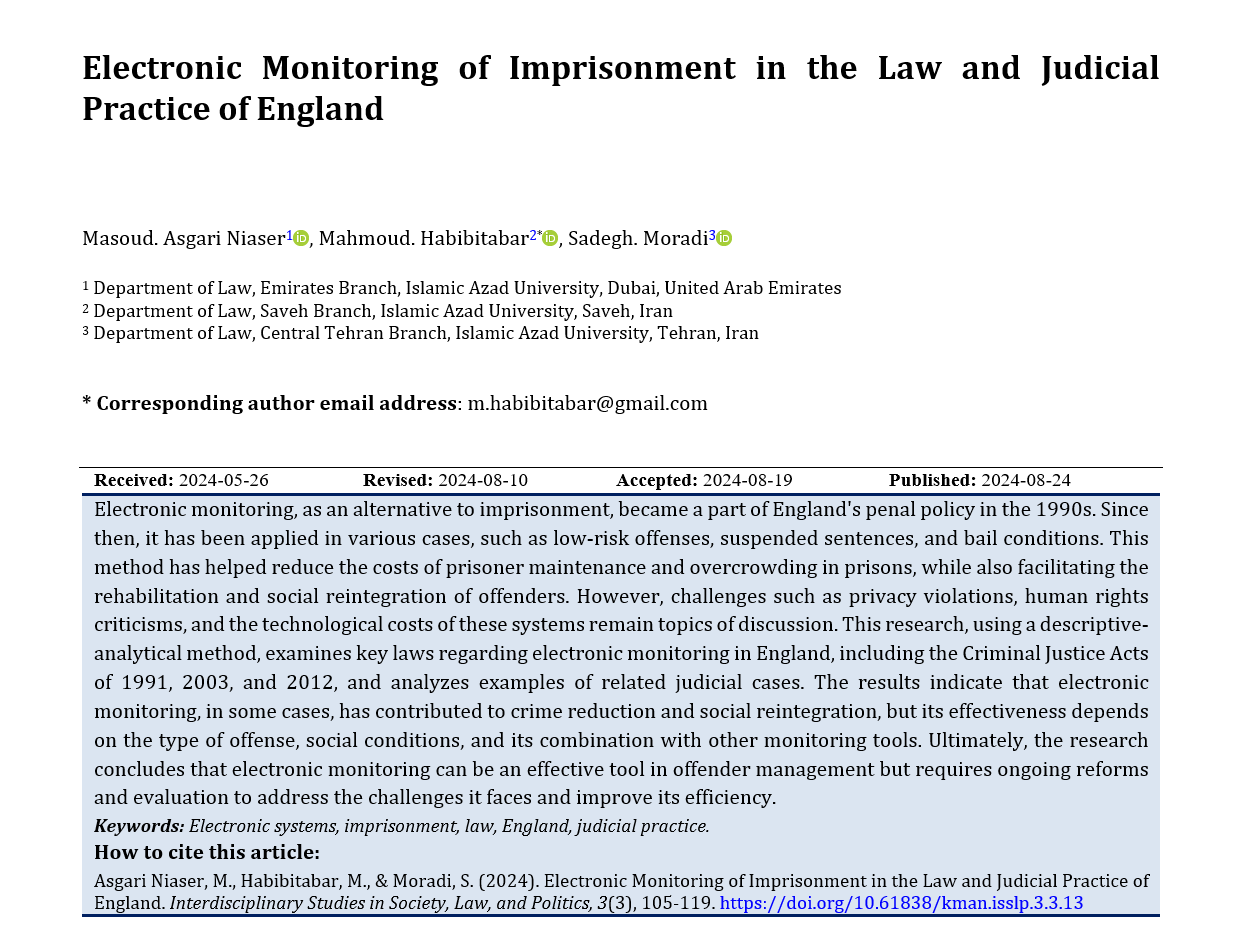Electronic Monitoring of Imprisonment in the Law and Judicial Practice of England
Keywords:
Electronic systems, imprisonment, law, England, judicial practiceAbstract
Electronic monitoring, as an alternative to imprisonment, became a part of England's penal policy in the 1990s. Since then, it has been applied in various cases, such as low-risk offenses, suspended sentences, and bail conditions. This method has helped reduce the costs of prisoner maintenance and overcrowding in prisons, while also facilitating the rehabilitation and social reintegration of offenders. However, challenges such as privacy violations, human rights criticisms, and the technological costs of these systems remain topics of discussion. This research, using a descriptive-analytical method, examines key laws regarding electronic monitoring in England, including the Criminal Justice Acts of 1991, 2003, and 2012, and analyzes examples of related judicial cases. The results indicate that electronic monitoring, in some cases, has contributed to crime reduction and social reintegration, but its effectiveness depends on the type of offense, social conditions, and its combination with other monitoring tools. Ultimately, the research concludes that electronic monitoring can be an effective tool in offender management but requires ongoing reforms and evaluation to address the challenges it faces and improve its efficiency.
Downloads






